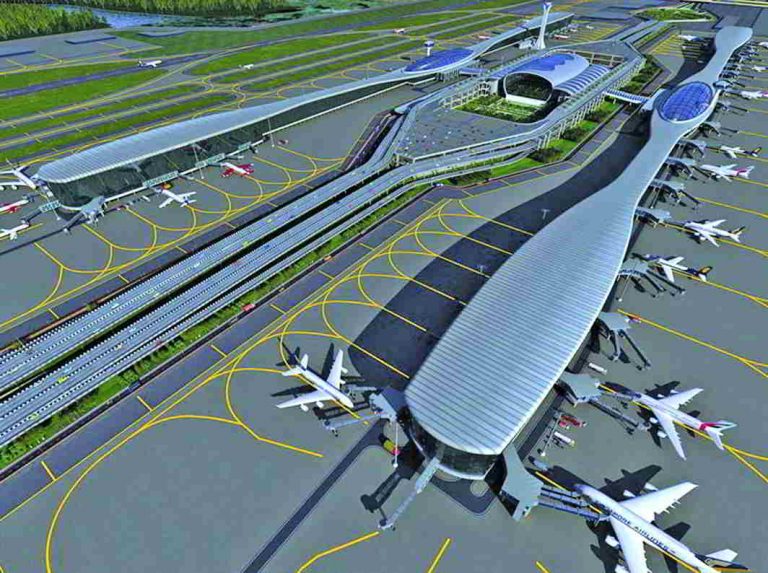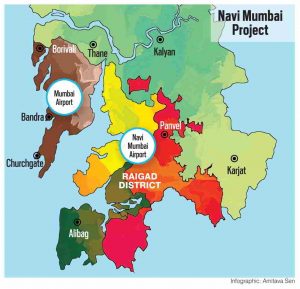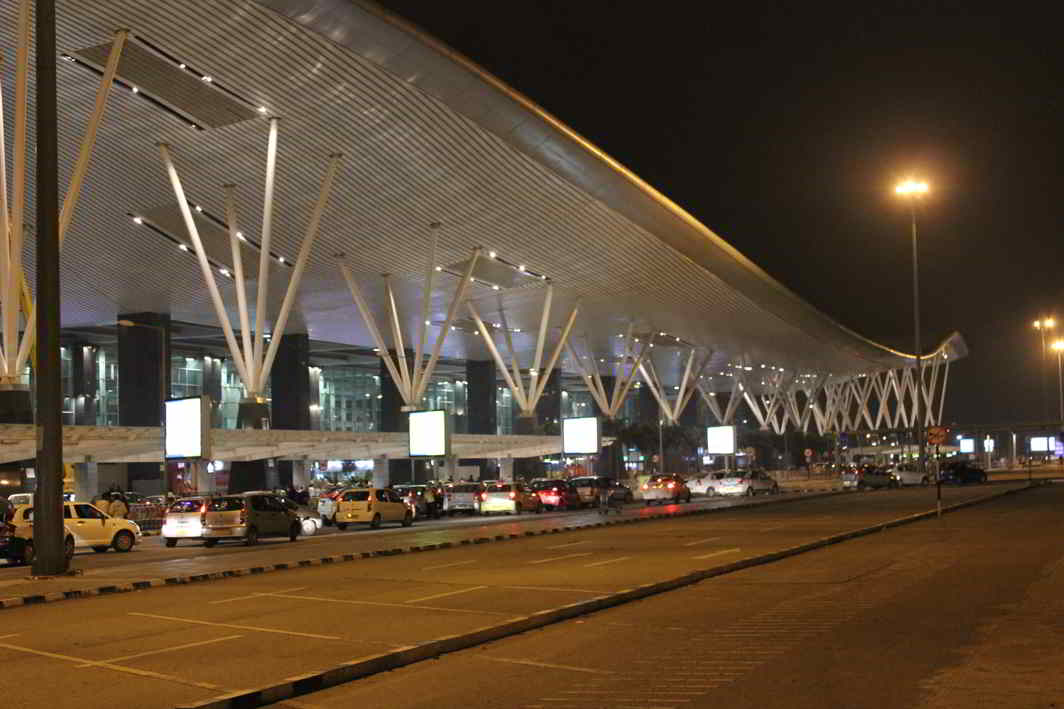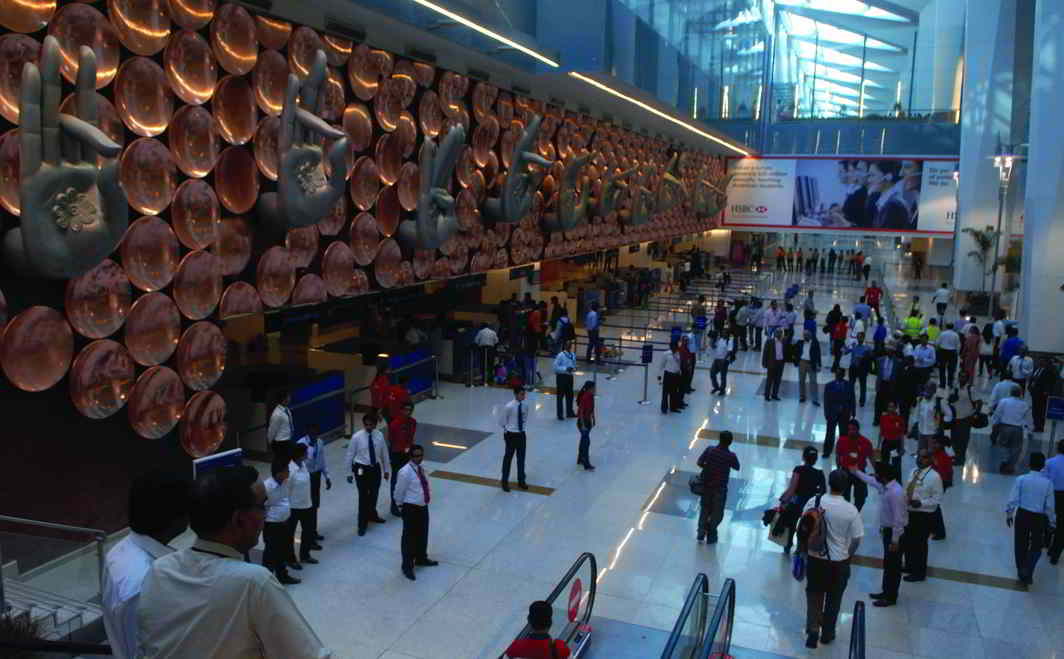
GVK-MIAL landed a Rs 16,000-crore contract from which other bidders mysteriously backed off, giving the infrastructure conglomerate a windfall deal at the expense of the taxpayers
~By Team India Legal
When GVK Power & Infrastructure’s Mumbai International Airport Ltd (MIAL) was awarded the prestigious Rs 16,000-crore contract to “design, build, finance, operate and transfer” (DBFOT) the Navi Mumbai airport on February 13, 2017, it was seen as yet another feather in its cap. But was it just that? Beyond the celebration and hype reflected in the company’s shares soaring 17 percent on the stock market, the news spread some uneasiness in civil aviation circles.
Though objections to the manner in which the contract was finalised have still not come out in the open, the entire tendering process which helped GVK outpace other bidders has nevertheless raised several questions.
Key among them are the following:
- Was the tendering process cleverly designed to ensure that there would only be one winner—GVK, the Hyderabad-based conglomerate and its company, MIAL?
- Did the City and Industrial Development Corporation (CIDCO), the nodal agency appointed by the Maharashtra government in July 2008 to execute the private-public partnership (PPP), allow itself to be shortchanged when it accepted the 12.6 percent share of annual revenue offered by GVK?
There are many in the aviation sector who believe that CIDCO did land itself a raw deal. Their reasoning is that revenue-sharing for other major airport contracts involving private players was far higher than what was offered to CIDCO for the Navi Mumbai project. The facts say it all:
- In the case of Delhi International Airport, the GMR-led consortium shares 45.99 percent of its revenue with the nodal agency, Airports Authority of India (AAI)
- The GVK-run MIAL parts with 38.7 percent of its annual revenue at the Mumbai international airport
- In the bid for Goa’s second airport last year, GMR won the tender with a 36.99 percent revenue share offer
Though the Navi Mumbai airport has to be built from scratch, it is projected to be a major air terminus. When it comes up, it will be one of the largest “Green-field” (built on undeveloped land) airports in the world with an eventual capacity to handle 60 million passengers annually. Delhi, according to official figures, currently handles about 57 million passengers and Bombay approximately 45 million. So, in sheer size and scale the new airport compares well with the other two leaders in the country and yet the revenue sharing settled by CIDCO seems remarkably low. Was GVK-MIAL willfully or unwittingly handed a sweetheart deal?

According to a source in AAI, whatever the explanations and justifications offered, CIDCO should have got at least about 26-30 percent of the revenue share. Says the source: “CIDCO will, of course, say that it had hired consultants for the tendering process, it will say that it went through the entire process with due diligence. It will also tell you that all other bidders pulled out. But, all things said, there is no denying that CIDCO has been shortchanged.”
According to him, when the new airport becomes operational, it would generate revenues running into thousands of crore a year for the private partner. That is when the reduced earnings for CIDCO from the poor revenue-sharing arrangement will become apparent. “A continuous low earning year after year will finally add up to a humongous sum. That’s when audit organisations like the Comptroller and Auditor General of India (CAG) will raise objections and question the deal,” the source added.
Existing PPP airports at both Delhi and Mumbai have already come in for sharp criticism from the CAG. In its report tabled in parliament in August 2016, CAG found violations of the terms of agreement signed in the privatisation of Mumbai and Delhi airports. According to the report, AAI incurred a financial loss of Rs 43 crore in 2015-16 due to flawed agreements with joint venture companies operating the two airports.

The GVK Group is the private operator at the Chhatrapati Shivaji International Airport in Mumbai. Here is what CAG had to say in its 2016 report about AAI’s accounting: “Audit noticed that AAI has not taken any concrete steps for recovery of the revenue and safeguarding its own interests even when they had been highlighted by the independent auditor. This led to short receipt of Rs 29.59 crore as revenue from MIAL and consequent loss of interest of Rs 20.64 crore.”
Was such an oversight an error or a deliberate act is debatable.
Two years before that, in 2014, the CAG report— “Implementation of Public Private Partnership Project at Chhatrapati Shivaji International Airport”—made this noting in its recommendations: “Absence of review clause and re-negotiations appears to virtually allow MIAL the right to operate the airport for a period of 60 years with the terms and conditions frozen in the Operation, Management and Development Agreement (OMDA). It is essential that a regular and well-documented review of the performance of MIAL by MoCA (Ministry of Civil Aviation) is in place to safeguard the interests of the Government and to get MIAL to deliver committed outputs.”
For example, CAG found that delays in the project which necessitated additional cash inputs from the private partner were actually recovered as “development fees” from passengers. To quote the CAG report: “One of the goals of a PPP arrangement is to effectively allocate risks among the contracting parties. Examination of audit reveals that risks had not been appropriately transferred to the concessionaire in the development of CSI airport Mumbai. Though the project cost more than doubled, the concessionaire did not appear to face financial vulnerability for the same as the funding gap was largely being absorbed by the passengers through the levy of development fee (DF), although such a fee was not in the Operation, Management and Development Agreement.”
Though there have been blemishes in their track record vis-à-vis airports, two infrastructure companies—GVK and the Bangalore-based GMR—allegedly have a favoured status when it comes to bagging airport contracts. Which is why the two have a virtual monopoly over the private airport operation space in the country (See Box).
World of Monopolies
Till privatisation of airports got underway in 2006, the Airports Authority of India (AAI) had mono-poly over operating airports in the country. But its grip has since been loosened and been replaced by infrastructure development conglomerates—GVK and GMR.
Between the two, they control airports that service over 60 percent of traffic. The GMR Group operates international airports in Delhi and Hyderabad and has bagged the contract for Goa’s second airport. The GKV Group runs international airports in Mumbai and Bangalore and will be setting up the Navi Mumbai airport.
“If privatisation was to end the monopoly of AAI, then it has merely been replaced by the two groups. I think when the bids were invited for Navi Mumbai, the two groups which already ran airports, should have been barred. That would have opened up the competition to other players. This was a suggestion given to then aviation minister Praful Patel, but it was not considered,” an AAI official told India Legal.
He says the government must re-think on keeping only 24 percent of the share. “The government should have 51 percent majority stake as it has done in the power sector. This would have ensured better compliance by the private player and better oversight by the government. Giving away 72-74 percent equity was not a good idea.”
Meanwhile, bids will be opened for the privatisation of Ahmedabad and Jaipur airports by the end of May. Among the domestic players in the fray are the GVK and GMR Groups. Naturally.
So how did the Navi Mumbai Airport bid finally swing GVK-MIAL’s way? One will have to rewind to the beginning to get a grip on what transpired. It was on February 5, 2014, that CIDCO invited global tenders for developing the new airport. Nine bids were received with Request for Qualification (RFQ) forms. Four bidders were shortlisted, namely: (a) Mia Infrastructure, a joint venture between Tata Reality Infrastructure and French company Vinci Concessions, (b) GMR Group, (c) GKV Group-led MIAL, and (d) Hiranandani Developers and the Zurich Airport Consortium.

But by the middle of 2016, three of the bidders—Tatas, GMR and Hiranandani—decided to suddenly pull out. The official reasons cited and articulated in the media were: GMR said that it was pulling out since one of the contracts for pre-development work had been awarded to a GVK joint venture with GMR and so involved a conflict of interest. The Tatas bailed out because conditions in the contract were not feasible and some of the families occupying land designated for the airport had not been evicted. The Hiranandani Group in its note to CIDCO pointed out that its partner, Zurich Airport, was not interested as project costs had escalated. It had also scaled down its equity participation from 26 percent to 10 percent for which CIDCO had not given its approval. This left the GVK Group’s MIAL as the sole bidder.
Slow take-off
A history of the Navi Mumbai airport project
The idea of setting up a second airport to ease congestion in Mumbai was first mooted in 1997. A Ministry of Civil Aviation (MoCA) committee was constituted which examined several sites. CIDCO had identified land and submitted its own proposal which was considered suitable. CIDCO was asked to submit a techno-economic feasibility report. It submitted the study and a business plan to MoCA in February 2007, which was approved by the Union cabinet five months later.
The Maharashtra government approved the project in 2008 and CIDCO was appointed the nodal agency for the PPP project. The airport received a Ministry of Defence clearance in 2010. But there were several objections from environmental groups over the destruction of mangroves in the Panvel region where the airport will come up. The Ministry of Environment and Forests finally cleared the project in November 2010.
The new airport covers an area of 2,320 hectares, for which land was acquired by the Maharashtra government from five villages in the Raigad-Panvel belt. CIDCO invited global tenders for the airport project on February 4, 2014. The contract was awarded to GVK-MIAL on February 13, 2017.
Other than the official reasons cited, sources in the civil aviation ministry told India Legal that there was another key factor that prompted the sudden pullout by the bidders. The bid contract had inbuilt in it a “first right to refusal” clause which rested with the GVK Group. This meant that even if another bidder quoted up to 10 percent higher, GVK had the right to match the bid and bag the contract. “With such a clause, the others would have thought it futile to be in the race. It would virtually be a lost cause where the winner has been virtually decided,” says the official.
With only a single bidder left, CID-CO could have awarded the contract to the GVK-MIAL. But it is reliably learnt that there was unease in the top echelons of the Maharashtra government that awarding the contract with only one bidder in the reckoning would attract criticism and invite the charge of favouritism. So, in a surprise move, CIDCO extended the deadline for submission of bids from January 9, 2017 to January 25.
When no new bidder came forward, the deadline was further extended to February 13. On the last day of the deadline, GMR finally threw its hat in the ring. Sources in AAI told India Legal that the company was allegedly persuaded to do so to show that this was a competitive bid. But the share of the revenue that it offered CIDCO was 10.44 percent which was less than the 12.6 percent that MIAL was offering. The Navi Mumbai airport contract was thus bagged by the latter.
Last year, GVK refrained from putting in a financial bid for Goa airport which helped GMR win the contract.
When asked by the media about why the new airport had attracted a lower revenue share than other airports, CIDCO officials offered this explanation: the revenue share component was lower because the project risks were that much higher for Navi Mumbai as there was no airport infrastructure in existence.
There was also no real estate development opportunity at Navi Mumbai compared to the other airports. CIDCO made it clear that it will not lease surplus land to the airport developer for commercial exploitation. Land earmarked for non-aeronautical purposes would instead be leased by CIDCO to hotels, convention centres, etc. Bidders had requested CIDCO to allow them access to the surplus land but this was categorically turned down.
But the big question is, whether CIDCO could have attracted a better revenue-share. Also, given the blatant violations of the contract at PPP airports in Delhi and Mumbai, what is the guarantee that Navi Mumbai will also not meet the same fate? CAG, the civil aviation ministry, Maharashtra government and CIDCO will have to keep a close watch on this.

